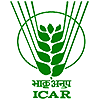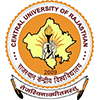The difference between the KEAM and NEET exams lies in their scope, eligibility criteria, syllabus, exam pattern, and difficulty level. The Key Difference Between KEAM and NEET is, if you want to get into medical school for your bachelor's degree in Kreala, you'll need to take the NEET exam. There won't be another entrance test called KEAM for medical courses anymore.
Student curious to know what is the difference between KEAM and NEET, must note that the basic difference between KEAM and NEET is that through the KEAM entrance exam students get admission to B.Tech and B.Pharm courses in Kerala, while through the NEET exam students get admission to Medical (MBBS, MD, MS) and Dental (BDS, MDS) programs in India.
The other difference between KEAM and NEET are regarding their set eligibility criteria, topics in the syllabus, exam pattern, difficulty level, and career scope after completing the exams. Although between the two NEET is a highly sought-after entrance exam as it grants admission to medical colleges all over India.
KEAM Exam Overview
The Kerala Engineering Architecture Medical (KEAM) is an entrance test administered by CEE Kerala to applicants seeking admission to Professional Degree Courses in Kerala's institutions and colleges.
Participating in the KEAM examination allows candidates to gain admission to engineering, medical, agriculture, forestry, veterinary, fisheries, pharmacy, and architecture programs. However, candidates must note that the entrance exam is only conducted for B. Tech and B. Pharm courses. For all other courses candidates can move directly for the counselling process.
| Particulars | Details |
| Exam Name | KEAM |
| Full Form | Kerala Engineering Architecture Medical Entrance Examination |
| Conducting Body | Commissioner of Entrance Examinations (CEE), Government of Kerala |
| Exam Level | State Level |
| Category | Undergraduate (UG) |
| Exam Mode | CBT |
| Medium | English |
| KEAM 2024 Official Website | www.cee.kerala.gov.in |
Also Read: KEAM Seat Allotment 2024: Process, Verification, Documents Required
NEET Exam Overview
The National Testing Agency (NTA) is responsible for administering the National Eligibility and Entrance Test (NEET) for Medical (MBBS, MD, MS) and Dental (BDS, MDS) programs in India. The exam is regarded as the most sought-after medical entrance examination.
NEET is a pen-and-paper test given in 13 languages that includes Physics, Chemistry, and Biology from class 11 and 12 textbooks.
Candidates should keep in mind that they can only apply for 15% of available seats in each college through NEET. These are known as All India Quota Seats. The remaining 85% will be distributed as per the State Government and college policy.
| Particulars | Details |
| Exam Name | NEET |
| Full Form | National Eligibility Cum Entrance Test |
| Conducting Body | National Testing Agency (NTA) |
| Exam Level | National Level |
| Exam Frequency | Once a Year |
| Category | Undergraduate (UG) |
| Courses Offered | MBBS, BDS, B.V.SC |
| Languages | English, Hindi, Marathi, Odia, Tamil, Urdu, Bengali, Telegu, Kannada, and Assamese |
| Official Website | neet.nta.nic.in |
Also Read: Minimum Marks Required in NEET for MBBS
Differences between KEAM and NEET
There are some significant differences between the KEAM and NEET. These have been explained based on their differing parameters below.
Key Difference Between KEAM and NEET
KEAM 2024 and NEET 2024 represent two distinct components of medical admission in Kerala. The KEAM Centralised Allotment Process (CAP) is used to counsel students for admission to UG Medical, Agriculture, Co-operation & Banking, Climate Change & Environmental Science, B.Tech Biotechnology (under Kerala Agricultural University), Forestry, Veterinary, and Fisheries courses based on NEET scores.
The another basic difference between KEAM and NEET is former is organized by the Commissioner of Entrance Examinations (CEE).CEE creates a rank list based on NEET scores for counseling and admission. Simply put, admission to undergraduate medical courses in Kerala will be based on NEET, with no KEAM entrance exam.
CEE will conduct counselling and admission to UG medical degrees in Kerala for both the 85% All India and 15% state quotas. Counselling, merit lists, and admissions will all be based solely on the NEET scores. CEE will not organize separate entrance tests for medical admissions.
Eligibility Criteria for KEAM and NEET Exam
The following is the difference between KEAM and NEET exam's eligibility criteria.
| Parameters | KEAM Exam | NEET Exam |
| Exam Qualification | Candidates should have passed a 10+2 or equivalent from a recognized board/university with PCM with at least 45%. | Candidates should have passed 10 + 2 or equivalent with Biology/ Biotechnology, Physics, Chemistry, and English, with at least: UR - 50% OBC/SC/ST - 40% PwD-45% |
| Minimum Age Requirement | Aspirants should be aged 17 years as of Dec 31 of the year of examination | Aspirants should be aged 17 years as of Dec 31 of the year of examination. |
| Maximum Age Limit | No maximum age limit | No maximum age limit |
| Passing Marks | Candidates need to score a minimum of 10 marks to pass KEAM. There are no minimum marks for the SC/ST category. | To pass the NEET exam UR candidates need to score between 137-720 and SC/ST candidates need to score between 136-107. |
| Max Attempts | There is no restriction on the number of attempts. | There is no restriction on the number of attempts. |
| Nationality | Candidates should belong to one of the following categories - Keralite, Non-Keralite Category I (NK I) or Non-Keralite Category II (NK II). PIO/OCI is also eligible but not for reservations. | Indian nationals, NRIs, OCIs, PIOs, and foreign nationals are eligible to apply for the NEET exam. |
Also Read: Documents Required for NEET Counselling
Syllabus for KEAM and NEET
Another key difference between KEAM and NEET is in terms of syllabuses, NEET and KEAM differ slightly. KEAM has more things to study than NEET. The KEAM syllabus is set by CEE Kerala. The KEAM syllabus covers all three subjects: Physics, Chemistry, and Mathematics. It is based on the class 11th and 12th syllabus. KEAM disciplines will be weighted 5:3:2 in Mathematics, Physics, and Chemistry respectively.
The NTA NEET syllabus covers three subjects: physics, chemistry, and biology. Botany and Zoology are the two subfields of Biology in the syllabus. The syllabus is based on the syllabuses of state boards, CBSE, ICSE, NIOS, and COBSE for Class 11 and 12.
Also Read: 10 Day Study Plan for KEAM: Preparation Advice, Tips to Crack Exam
Exam Pattern of KEAM and NEET
The Exam pattern for KEAM and NEET differs quite a bit. Candidate can find details regarding the same in the table below.
| Particulars | KEAM Exam | NEET Exam |
| Exam Mode | Computer-Based Test | Paper-pen based Test |
| Subjects | Mathematics, Physics, and Chemistry | Physics, Chemistry, and Biology (Botany + Zoology) |
| Question Paper type | MCQs | MCQs |
| Total no. of questions per paper |
|
180 questions |
| Marking Scheme | +4 marks for each correct answer-1 mark for each incorrect answer0 mark for unattempted questions | +4 marks for each correct answer-1 mark for each incorrect answer0 mark for unattempted questions |
| Exam duration |
|
3 hours |
| Medium of language | English only | English, Hindi, Marathi, Odia, Tamil, Urdu, Bengali, Telegu, Kannada, and Assamese |
Also Read: What after NEET?: Counselling Process, MBBS/BDS Admissions
Difficulty Level of KEAM and NEET Exam
The difference between the KEAM and NEET examinations is that KEAM demands knowledge of the relevant courses, whilst NEET also requires deduction abilities and speed. Students will need to devote more time to practicing and improving their basic principles.
While the difficulty level of both the exams can differ from each year the following difficulty level has been found subject-wise for the two:
In the KEAM exam, the overall difficulty level is Moderate and subject-wise, physics is considered Moderate to Difficult, Mathematics is lengthy, and moderately difficult, while Chemistry is easy.
For the NEET exam, the overall difficulty level is moderate to tough. The physics paper is found to be difficult and lengthy, the chemistry paper is easy to moderate, while the biology paper is considered the easiest.
Also Read: What is a Good Score in KEAM?
Career Scope after KEAM and NEET
The career scope after KEAM and NEET differs from one another. The KEAM exam allows admission to B.Tech and B.Pharm courses whereas through NEET students seek admission into all types of medical courses.
After passing the NEET, students can pursue a variety of professional opportunities. It can offer entry into various medical and healthcare professions. These include career options like MBBS Doctor, Dentist, Nurse, Pharmacist, Legal medical advisor, Nutritionist, Clinical researcher/ Life science researcher, etc. Students can also opt for further studies and pursue degrees like MD, MS, and MBA.
B.Tech. is a technical course with numerous specializations. An online B.Tech concentration can be chosen based on your interests. After earning this degree, you can seek employment or pursue further education as needed. There are a plethora of options available like Computer Science Engineer, Mining Engineer, Mechanical Engineer, Civil Engineer, Automobile Engineer
Chemical Engineer, Electronics & Communication Engineer, Lecturer/Professor, Software Developer, and many more.
Completing a B.Pharma program opens you to a wide range of job prospects in the pharmaceutical industry. Students have the option of working in the public, private, or international sectors. Opportunities include working in government hospitals, private medical shops, hospitals/clinics as a hospital pharmacist, clinical researcher, drug inspector, chemical technician, medical writer, etc.






















